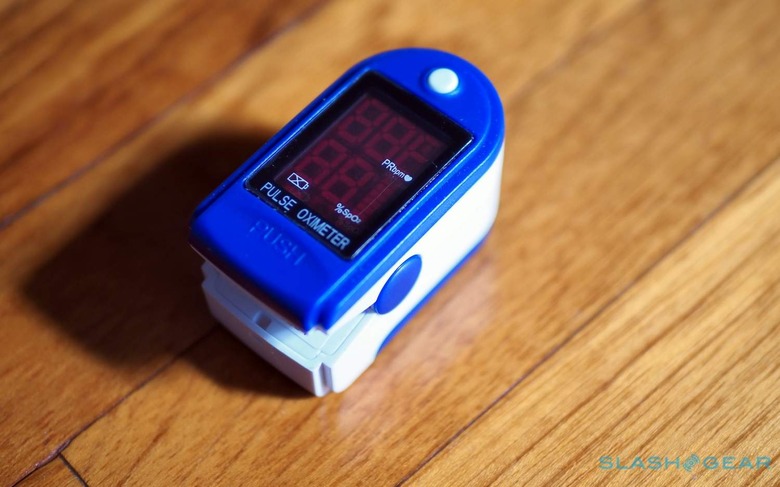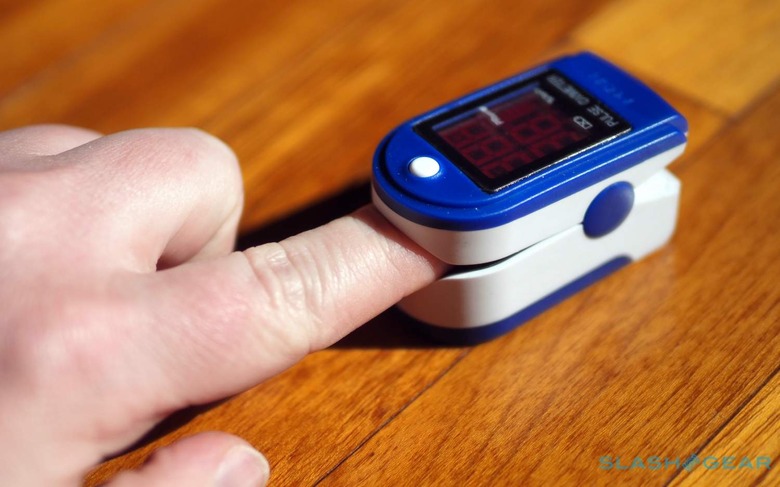FDA Pulse Oximeter Warning Cautions On COVID-19 Blood Oxygen Testing
Pulse oximeters used to test blood oxygen levels, an increasingly common precaution during the COVID-19 pandemic, may be giving a false sense of security according to an FDA warning. One of the warning signs of COVID-19 can be low levels of oxygen in their blood, even if they feel well, and a factor that can be an early indicator that medical care is needed.
It's led to an uptick in pulse oximeter sales. Typically small clips that fit onto the end of a finger, they use light to estimate the blood's level of oxygen saturation, and the pulse rate.
Oxygen saturation is expressed as SpO2, and is given as a percentage. For healthy individuals, a reading of 95- to 100-percent is typical, though those with lung issues or living at higher altitudes can commonly record lower numbers. The sensors also typically measure pulse rate, abbreviated PR.
Not all pulse oximeters are created equal
Although the core technology may be the same, there are different types of pulse oximeter. The biggest distinction is prescription versus over-the-counter (OTC), with the former typically found in doctors' offices and hospitals. They must be reviewed by the FDA and get 501(k) clearance, with clinical testing to ensure they're accurate in their readings. They can only be bought with a prescription.

OTC pulse oximeters, meanwhile, are more generally available. "These products are sold as either general wellness or sporting/aviation products that are not intended for medical purposes, so they do not undergo FDA review," the US Food and Drug Administration points out. "OTC oximeters are not cleared by the FDA and should not be used for medical purposes."
How to take a pulse oximeter reading
Actually using an OTC pulse oximeter is generally pretty straightforward. The clip fits onto the end of the finger – your hand should be warm, relaxed, and held below the level of your heart – and you should remove any nail polish first. Sitting still when the reading is being taken is important too, and you should wait for the numbers to settle on the display before noting down the SpO2 level.
However, there are a number of qualifying factors to bear in mind. According to an FDA safety communication on pulse oximeter accuracy and limitations, "although pulse oximetry is useful for estimating blood oxygen levels, pulse oximeters have limitations and a risk of inaccuracy under certain circumstances that should be considered."

As well as nail polish or varnish, factors like poor circulation, skin pigmentation, skin thickness, skin temperature, and current tobacco use can all affect the accuracy of a pulse oximeter. A single reading is less useful than a trend of readings: if the numbers are steadily declining over repeated measurements, that can be a sign that you should seek medical attention. "Do not rely only on a pulse oximeter to assess your health condition or oxygen level," the FDA insists: if you're also experiencing difficulty breathing, chest pain or tightness, a fast or racing pulse rate, or bluish coloring in the face, lips, or nails, seek immediate attention even if the pulse oximeter suggests your levels are normal.
Cheap pulse oximeters may not be especially accurate
The reality is, the FDA warns, that while prescription pulse oximeters have to reach a certain level of accuracy, the same isn't true for OTC models. SpO2 readings are only to be considered an estimate of overall oxygen saturation.
"For example," the FDA explains, "if an FDA-cleared pulse oximeter reads 90%, then the true oxygen saturation in the blood is generally between 86-94%. Pulse oximeter accuracy is highest at saturations of 90-100%, intermediate at 80-90%, and lowest below 80%."
If you're using an OTC pulse oximeter, then, or the blood oxygen tool on your Apple Watch or other wearable, it should be as part of a general awareness of COVID-19 symptoms rather than the only aspect. Particular care should be taken for people of color or anybody with darker skin, since the results can be less accurate due to the testing method. Most important of all, even if the numbers on the screen say you're in the normal range, that shouldn't override how you're feeling and any other symptoms you're experiencing, particularly if there's been a chance of exposure to someone with COVID-19 recently.
